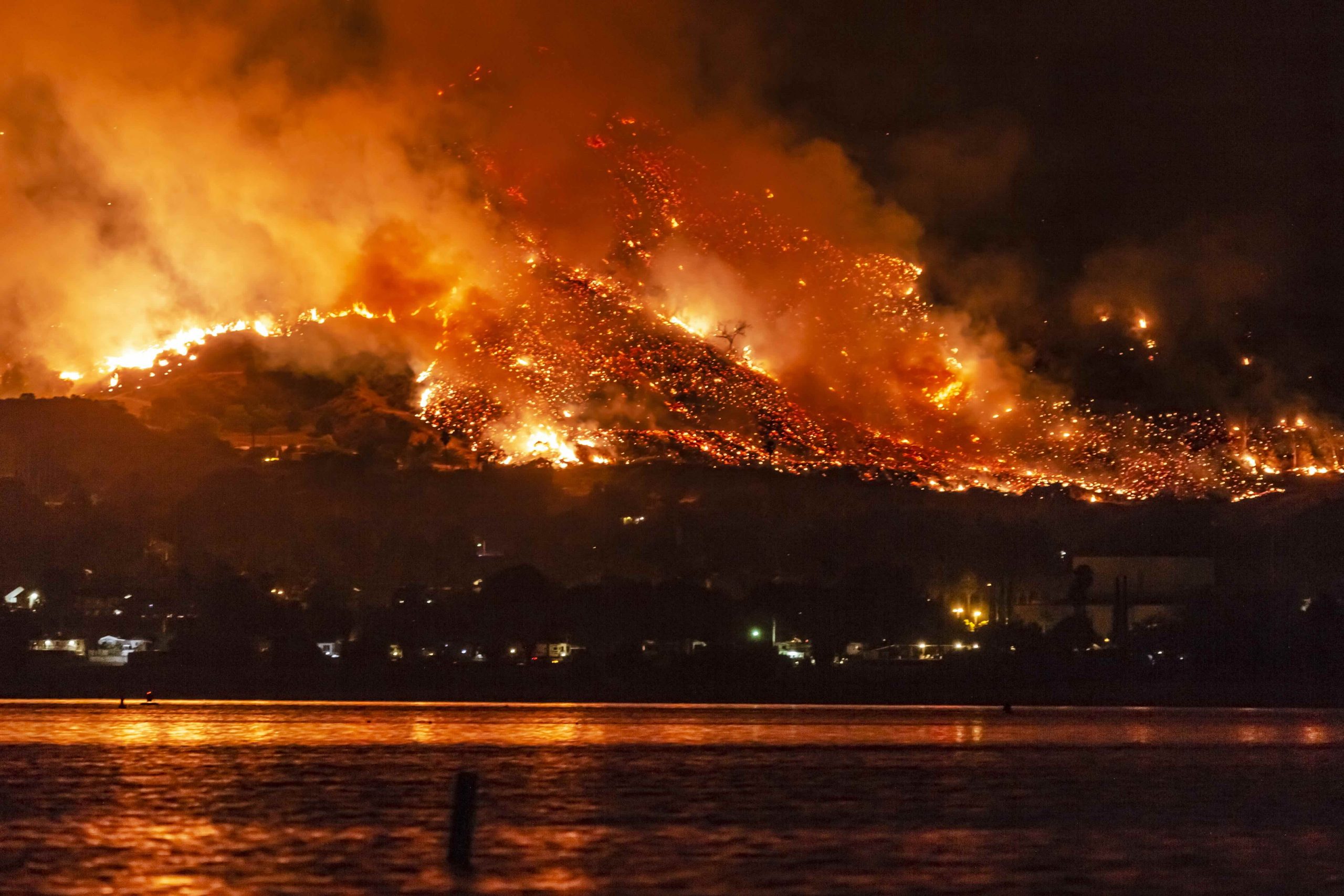Applying altmetrics to climate change papers reveals that they are amongst the most engaging research articles of 2019. Papers on the climate emergency, rising sea levels and the restoration potential of trees gained top spots in the Altmetric.com annual survey, giving a fresh perspective on what research is interesting and popular to broader audiences. Let’s take look at how altmetrics work, what papers were selected by Altmetric.com, as well as the pros and cons of using altmetrics to evaluate research.
The Top 100 research papers of 2019, published by Altmetric.com can be used as an indicator of just how important climate change was for global media engagement in 2019. A year dominated by climate strikes, climate talks, and extreme weather events brought a constant flow of climate-related content that has received an extremely high level of engagement (even when compared to other academic papers).
Getting an idea of what papers featured the most can shed light on science’s contribution to popular conceptions of climate change. In fact, surveys such as Altmetric.com’s track all the “mentions” related to academic papers (whether this is in newspapers, social media, or blogs), giving an indication of the engagement they have generated and providing an added dimension to the standard “citation score”, which relies exclusively on citation analysis to measure research impact. However, understanding the limitations of these scores in evaluating research significance is also important.
What are altmetrics?
Overall altmetrics give a record of attention, a measure of dissemination, and an indicator of influence and impact. Although not infallible, they are a useful tool for determining research impacts and can offer insight into the influence of articles.
By creating a “score” that brings together a variety of “mentions”, altmetrics can give a multifaceted picture of where and to what extent research is generating engagement. Altmetrics calculate the impact of research based on diverse online research outputs, such as social media, online news media, online reference managers and so on. Not only do they identify impact but they provide detailed breakdowns of what makes up the impact, which can give further insight into what type of engagement any given article has generated.
Through metrics and qualitative data – that can be used in addition or in unison with traditional citation-based metrics, including peer reviews on Faculty of 1000, citations on Wikipedia and in public policy documents, discussions on research blogs, mainstream media coverage, bookmarks on reference managers like Mendeley, and mentions on social media networks such as Twitter and Facebook – altmetrics can provide a breakdown of the most discussed papers over any given period of time. Sourced from the Web, they outline how often journal articles and other scholarly outputs like datasets are discussed and used. For these reasons, altmetrics are considered a valuable addition to research evaluations and have been incorporated into researchers’ websites, institutional repositories and journal websites amongst others.
However, it is also important to note that altmetrics are not without their problems: they can be subject to bias, inconsistencies and even “gaming”. This is particularly worrying as universities and research institutions begin to place more emphasis on altmetrics in their funding processes and research evaluations. Therefore, it is important to remember that the greatest added value of altmetrics is that they help us understand engagement, rather than acting as a measure of the overall value of the work in question.
Altmetric.com’s most featured climate papers of 2019
As with each year, Altmetric.com composes a list of the top 100 research papers. In 2019 three of the top ten, and seven of the top twenty papers were to do with climate change, making it the second-most featured topic after medical and health sciences.
The top spot for climate-related papers went to World Scientists’ Warning of a Climate Emergency. Achieving fourth spot overall and bringing together more than 11,000 scientists in denouncing “clearly and unequivocally planet Earth is facing a climate emergency.”
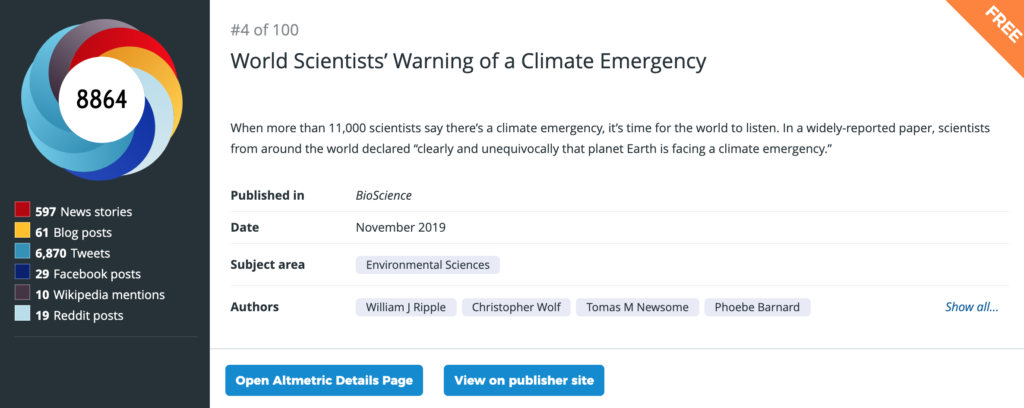
In second place comes New elevation data triple estimates of global vulnerability to sea-level rise and coastal flooding. Published in Nature Communications, this piece of research indicates that the number of people threatened by the global rise in sea level and floods could be triple previous estimates due to accelerated climate change.
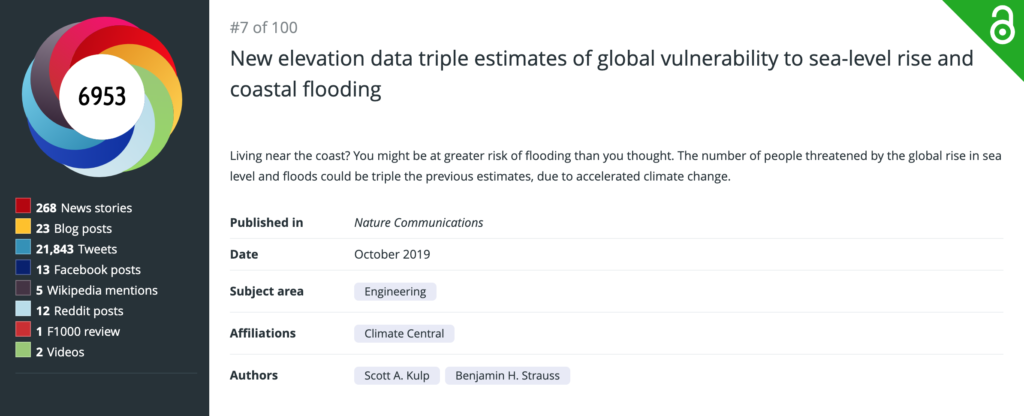
In third place, we find The global tree restoration potential. At a difference to the previous two, this study focuses on solutions to the climate crisis, pointing to the mitigation potential of planting trees. However, it was also subject to criticism due to its claim that planting trees is the “most effective solution” for cutting CO2. The authors eventually revised the statement to: “one of the most effective solutions”, admitting that energy efficiency and deployment of non-fossil fuel energy could be just as effective.
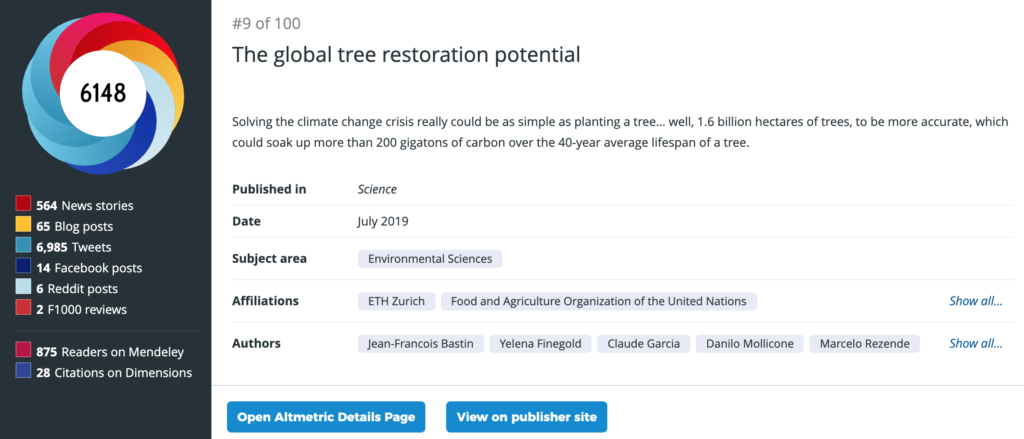
Next in line is the Worldwide decline of the entomofauna: A review of its drivers. This paper looks at the potential for widespread ecosystem failure due to more than 40% of insect species declining and over 30% becoming endangered.
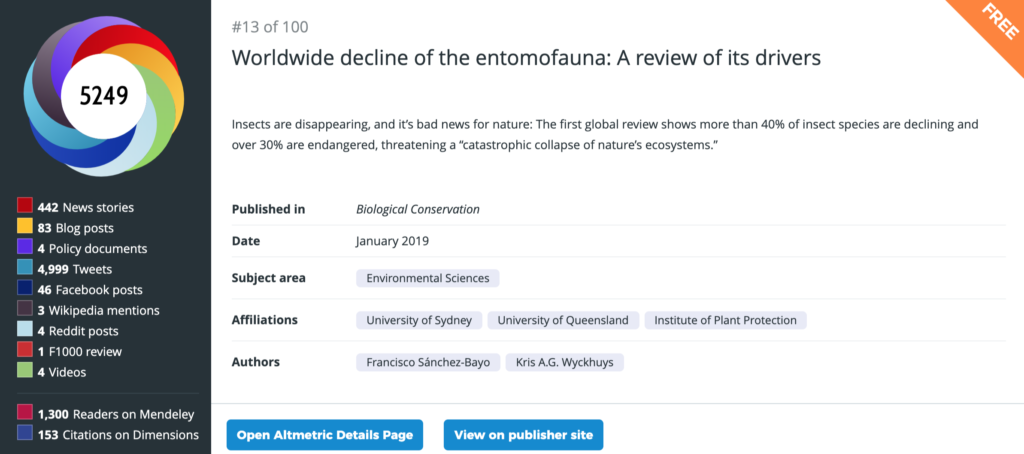
Making it into the top five is the paper published in Nature and entitled Committed emissions from existing energy infrastructure jeopardize 1.5 °C climate target. Here researchers demonstrate how the current energy infrastructure can, at best, help us reach the 2-degree climate target, whereas if we are to aim for the 1.5 degrees of the Paris Agreement it’s time to start retiring fossil-fuel based power plants.
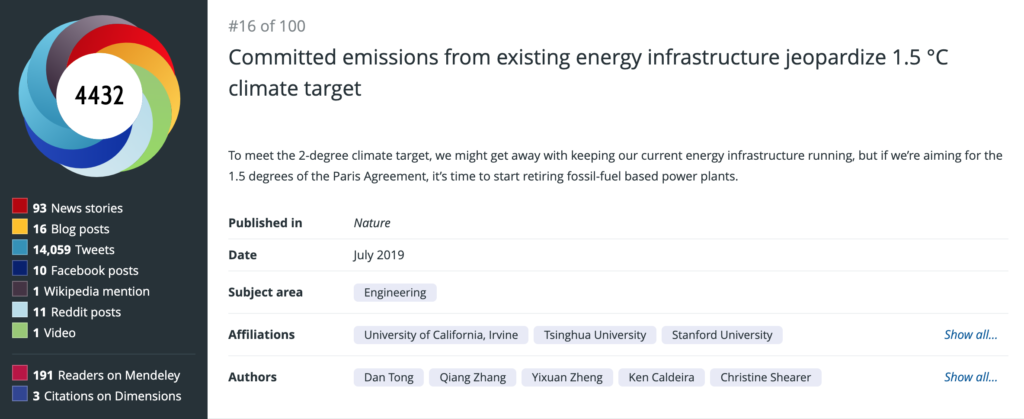
Just outside the top five is US military is a bigger polluter than as many as 140 countries – shrinking this war machine is a must, a writeup published in The Conversation and based on an original research article that shows how the US military emits more greenhouse gases than most medium-sized countries.
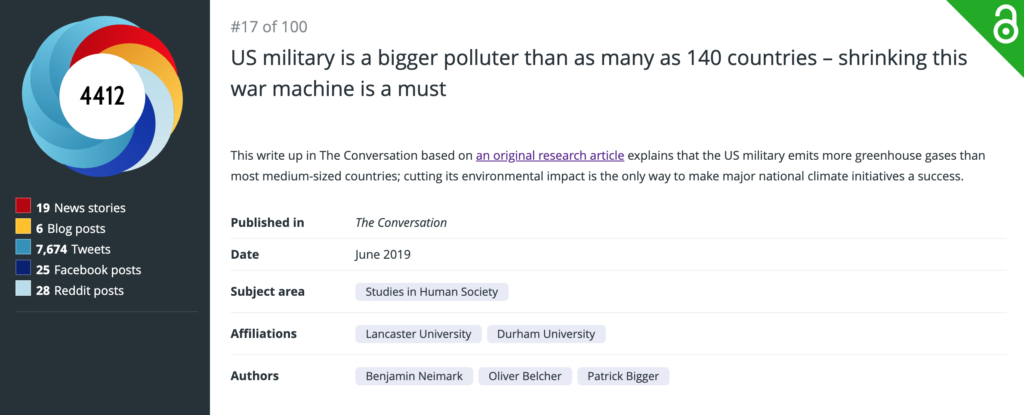
Finally, the last climate-related paper to make it into the survey’s top 20 is Food in the Anthropocene: the EAT–Lancet Commission on healthy diets from sustainable food systems. This paper outlines a food-related paradox: to save the environment, stay healthy and feed 10 billion people, the global food system must double the nuts, fruit, vegetables, and legumes it produces whilst halving the meat and sugar. However, only 40% of the world’s population can afford such a dietary shift.
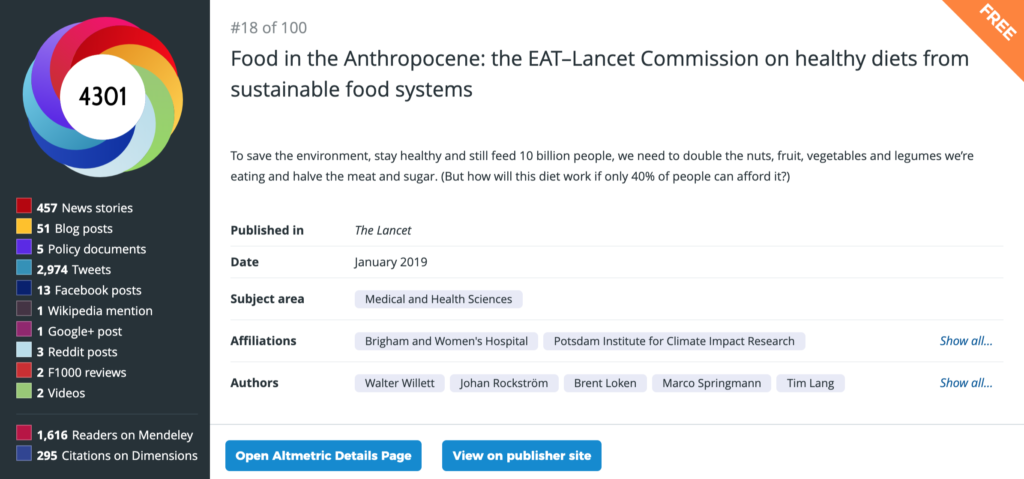
The pros and cons of altmetrics
The Altmetric survey reveals an interesting picture of what type of climate science is gaining the most media attention and engagement. However, it should not be considered an evaluation of the efficacy of research and should not be considered a point of reference in determining the direction of future research.
As some universities and research institutions begin to use altmetrics to rank their employees and determine their funding decisions there is a risk of prioritizing the wrong types of research. In fact, one of the most common and serious accusations leveled at altmetrics is that they can be subject to instances of “gaming”. This is in reference to the manipulation of data in order to produce results that fit a predetermined outcome, and thus a poor match for the rigorous standards of academic evaluation.
Due to the fact that altmetrics are predominantly based on the collection of web-based data, which includes the interactions between research and the general public, critics have indicated that they lack the assurances of traditional citation rankings that calculate academic impact, albeit in a more narrow scope and with a slower value accumulation process. It is therefore evident that research must also continue to rely on the peer review system to evaluate significance.
Although altmetrics are still far from being adopted as part of everyday research evaluation, their importance in demonstrating what is interesting and popular is already emerging. In fact, as they continue to develop and gain in importance the criteria they use to evaluate data will become increasingly reliable, especially as altmetrics harvesters such as Altmetric.com are very transparent about the data sources they use in their calculations and why they include them.




